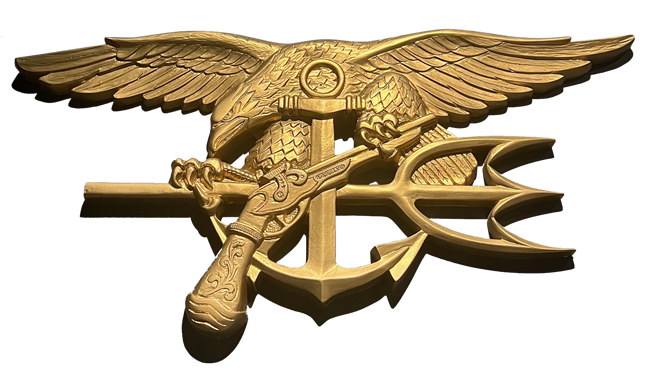A Symbol of Honor and Heritage
The Trident, also known as the SEAL pin or Special Warfare insignia, is a revered symbol worn by Navy SEALs, representing their elite status within the U.S. military. This gold insignia is comprised of three distinct parts: an anchor, a trident, and an eagle clutching a flintlock pistol. Each element carries significant meaning, reflecting the multifaceted nature of Navy SEALs’ capabilities and their distinguished heritage.
The anchor signifies the Navy’s maritime tradition and the SEALs’ primary domain, the sea. It symbolizes stability, steadfastness, and the ability to operate in any water environment. The trident, Poseidon’s weapon, represents SEALs’ mastery over the sea, their prowess in underwater operations, and their capability to strike from the depths with precision and lethality. The eagle, a symbol of the United States and its military strength, embodies SEALs’ readiness to defend the nation and uphold its values. The flintlock pistol represents SEALs’ proficiency in combat and their versatility in warfare across all terrains—sea, air, and land.

In the SEAL Teams, the Trident is much more than a badge; it is a mark of honor and courage, and a testament to the rigorous training and immense sacrifice required to earn it. The tradition of pinning the Trident on successful candidates is a highly ceremonial and emotional event. Known as a “pinning ceremony,” this event signifies the culmination of months of relentless training and the candidate’s official induction into the SEAL Brotherhood. The Trident is often pinned by a senior SEAL or a close mentor, making the ceremony deeply personal and meaningful.
This tradition reinforces the values and responsibilities that come with wearing the Trident. It serves as a constant reminder of the dedication, resilience, and brotherhood that define the SEAL Teams. For those who earn it, the Trident is a lifelong symbol of their elite status and unwavering commitment to their teammates and their mission.
